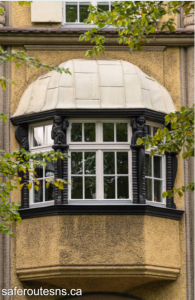Window trim: The different types and styles of window trim and their impact on home design
Window trim is an essential element of any window design, providing a finishing touch that can enhance the overall look of a room. From simple to ornate, window trim comes in a variety of styles, materials, and finishes. The right trim can add elegance, character, and even value to your home.

Types of Window Trim
There are several types of window trim, including:
Casing Trim: This is the most common type of window trim and is installed on the sides and top of a window to cover the gap between the window frame and the wall. Casing trim comes in various widths, from narrow to wide, and can be plain or decorative.
Sill Trim: This type of trim is installed at the bottom of a window and can be used for both interior and exterior windows. Sill trim is typically wider than casing trim and can be plain or have a decorative edge.
Stool Trim: Stool trim is the horizontal surface at the bottom of an interior window. It is often used in conjunction with sill trim and can be made from a variety of materials, including wood and stone.
Apron Trim: This trim is installed beneath the stool trim and covers the gap between the stool and the wall. Apron trim is usually wider than the stool trim and can be plain or have a decorative edge.
Materials and Finishes
Window trim can be made from a variety of materials, including wood, PVC, composite materials, and aluminum. Each material has its advantages and disadvantages, and the choice will depend on the specific needs of the homeowner.
Wood is a popular choice for window trim due to its natural beauty and versatility. It can be painted or stained to match any decor and can be carved or molded into intricate designs.
PVC and composite materials are an excellent option for those who want the look of wood without the maintenance. These materials are durable, resistant to rot and insects, and require little maintenance.
Aluminum trim is lightweight, durable, and can be easily painted to match any color scheme. It is also weather-resistant and does not require much maintenance.
In terms of finishes, window trim can be painted, stained, or left unfinished. Painting or staining the trim can add depth and contrast to the overall look of the window, while an unfinished trim can provide a more natural and rustic look.
Impact on Home Design
Window trim can have a significant impact on the overall design of a room and the home’s exterior. For example, adding a decorative trim can elevate the look of a room and create a focal point for the window. It can also enhance the architectural style of the home, such as adding a more traditional or modern feel.
The color of the trim can also have a significant impact on the home’s design. For example, a white trim can provide a clean and classic look, while a dark-colored trim can add depth and drama.
In addition to the aesthetics, window trim can also impact the functionality of the window. A well-designed and properly installed trim can help prevent drafts, improve energy efficiency, and protect against moisture.
In conclusion, window trim is an essential element of any window design, providing both form and function. From the type of trim to the material and finish, the options are endless, and the right choice can enhance the overall look and feel of your home.

